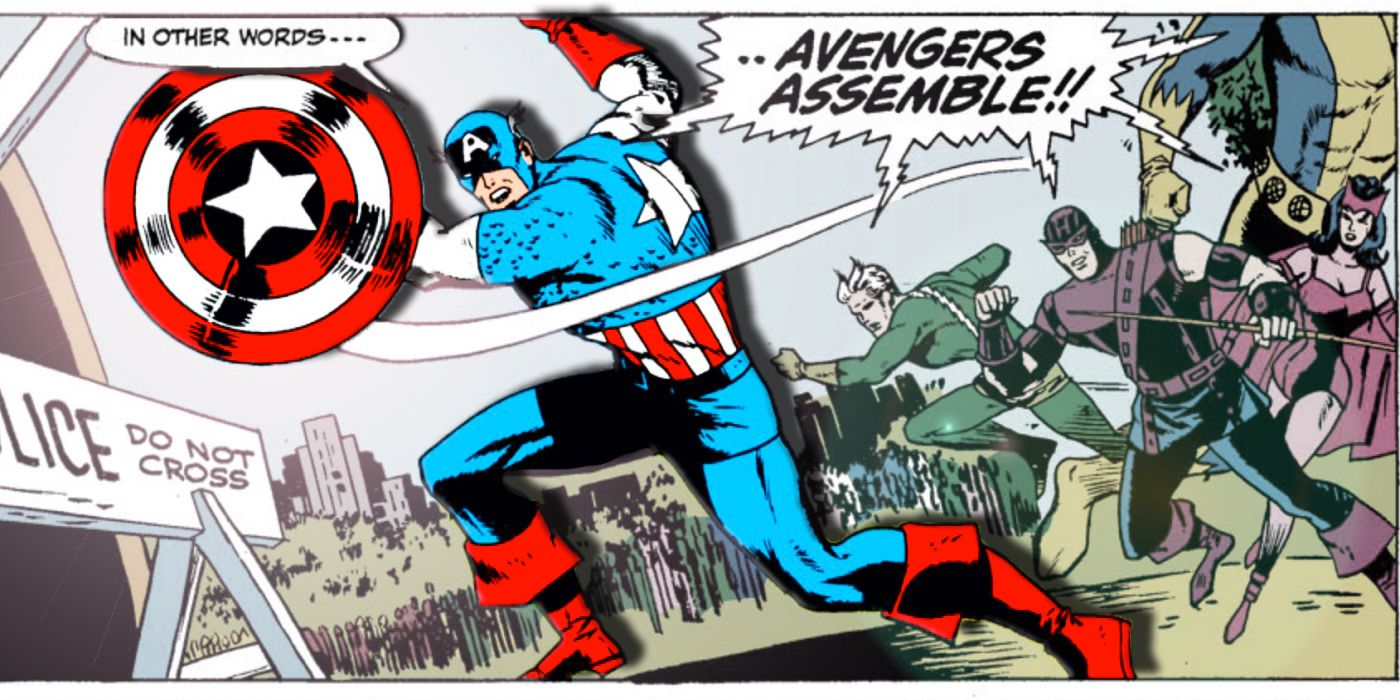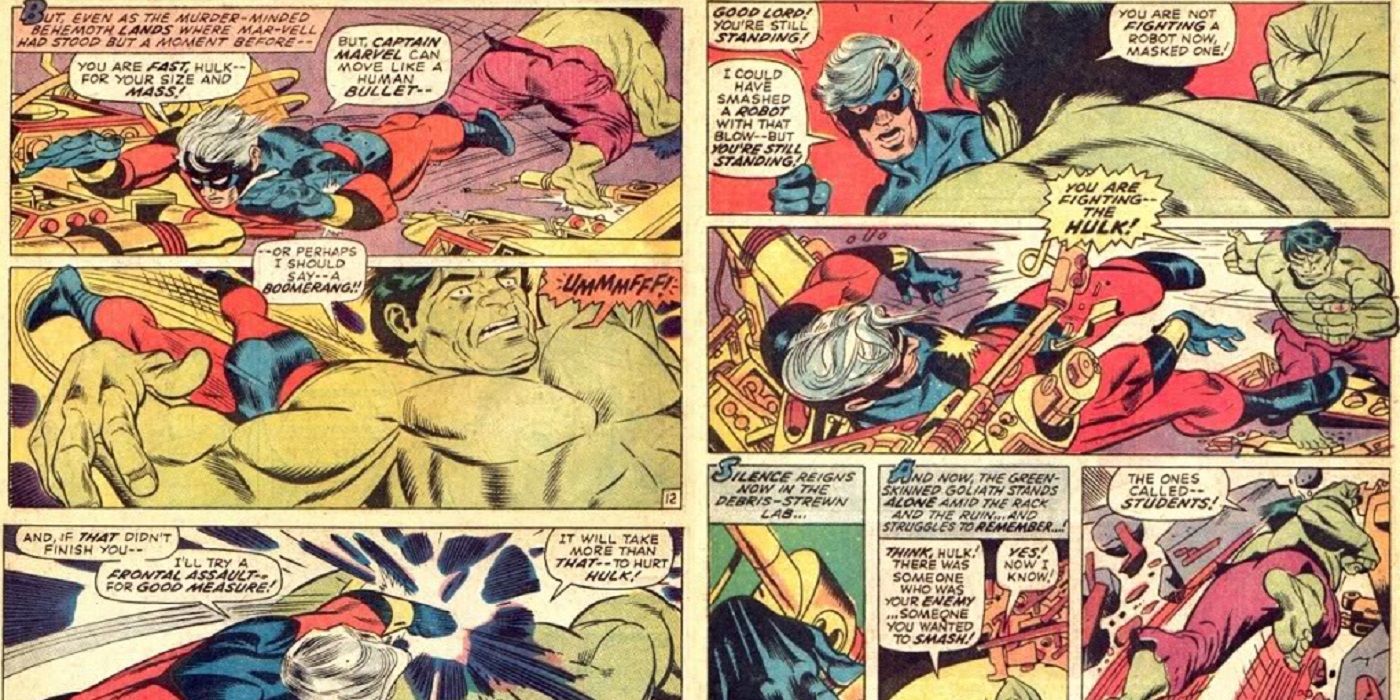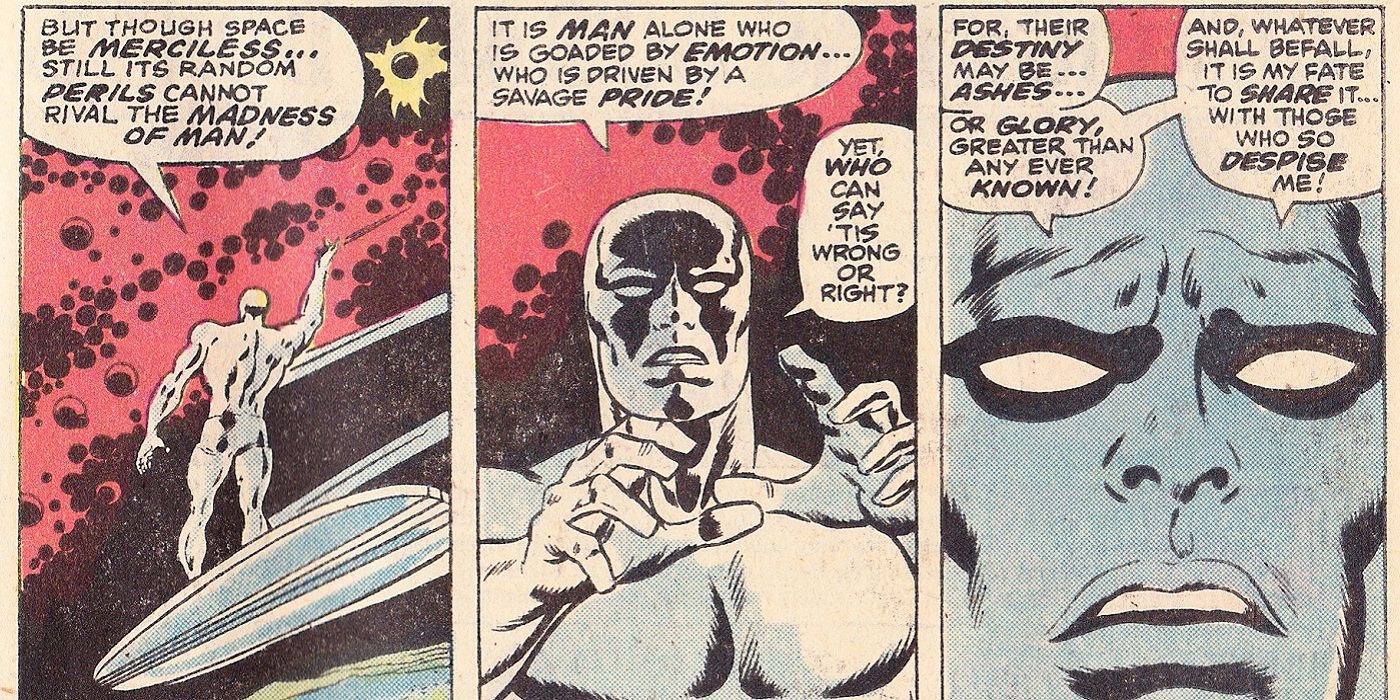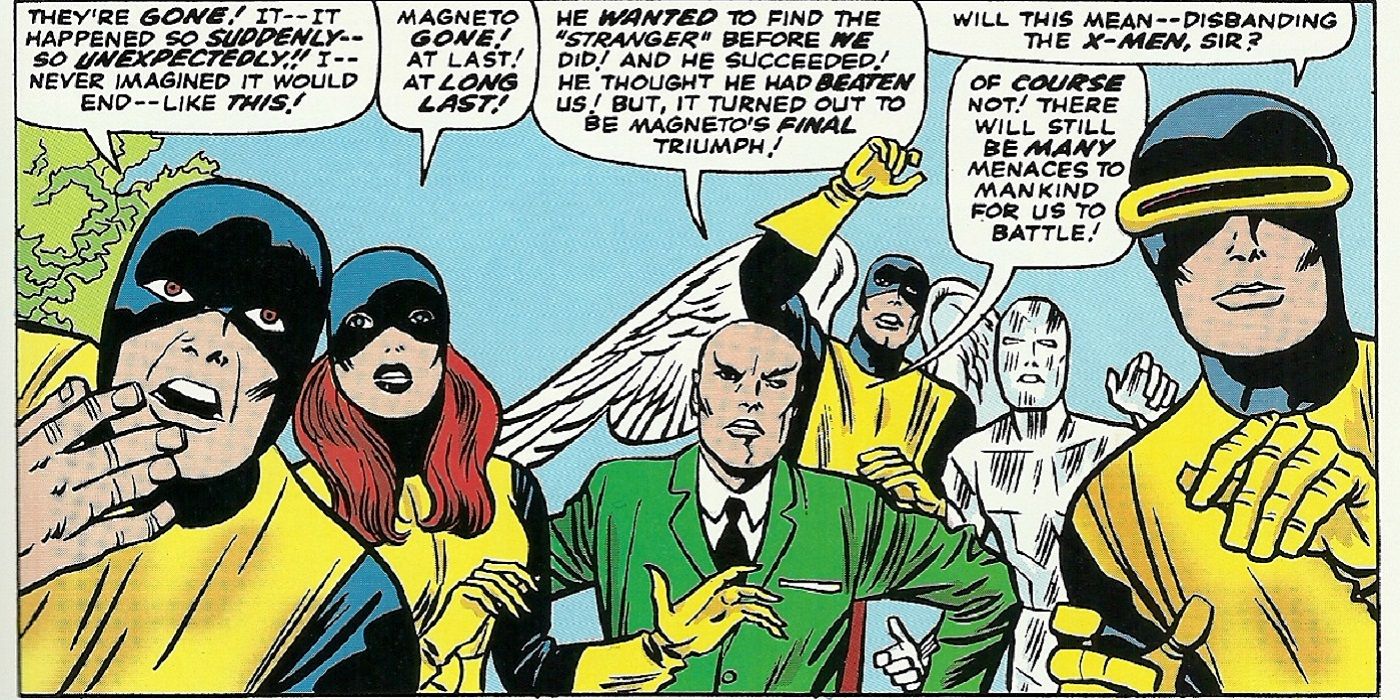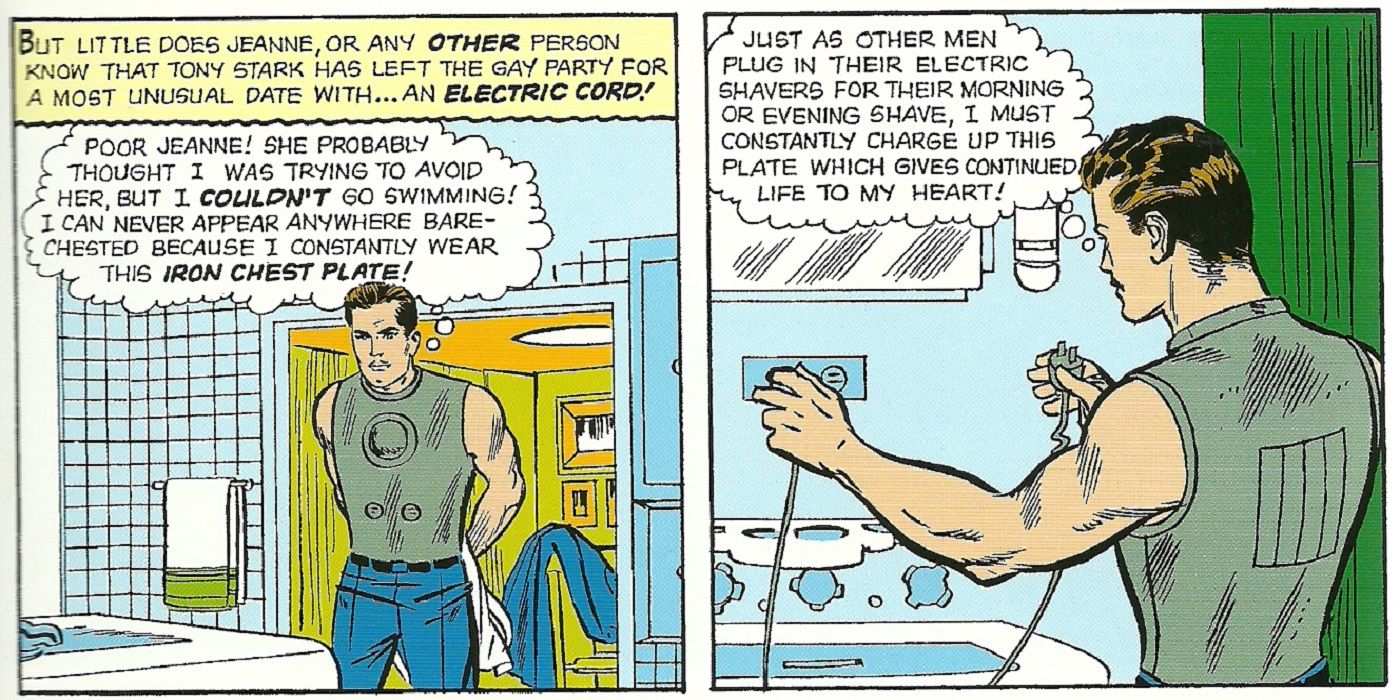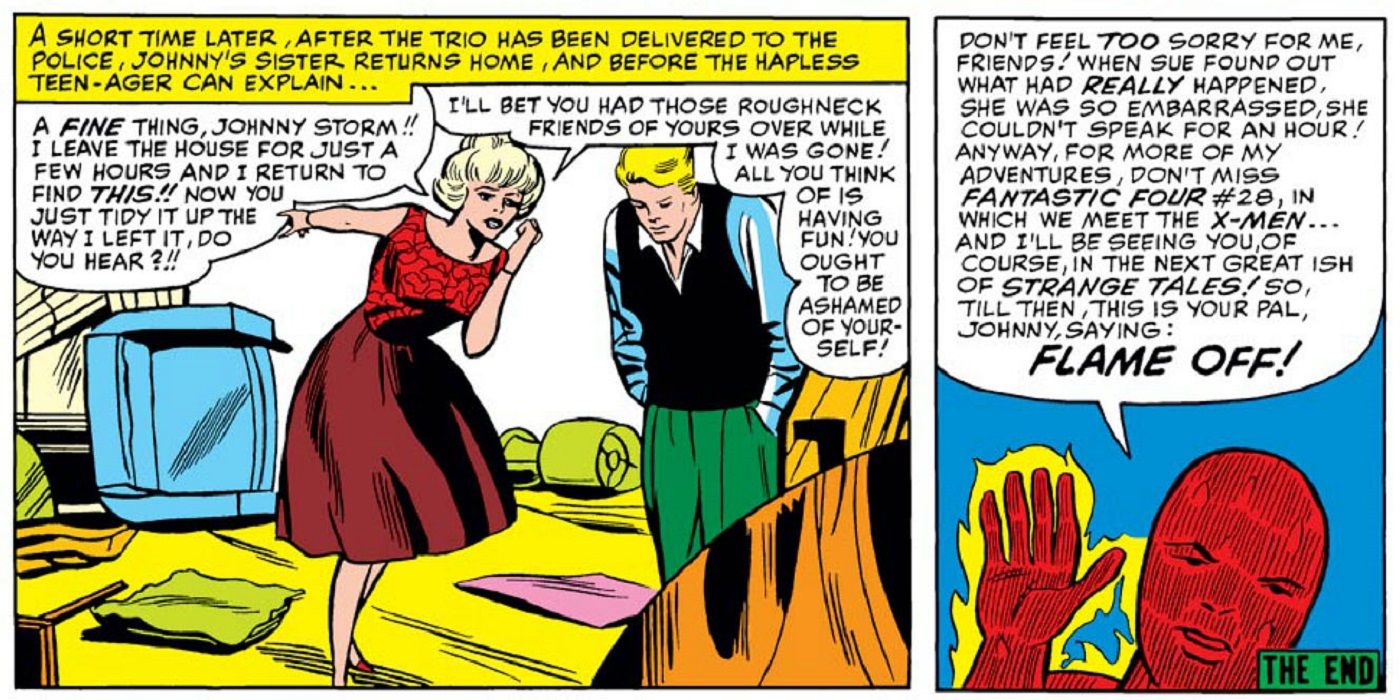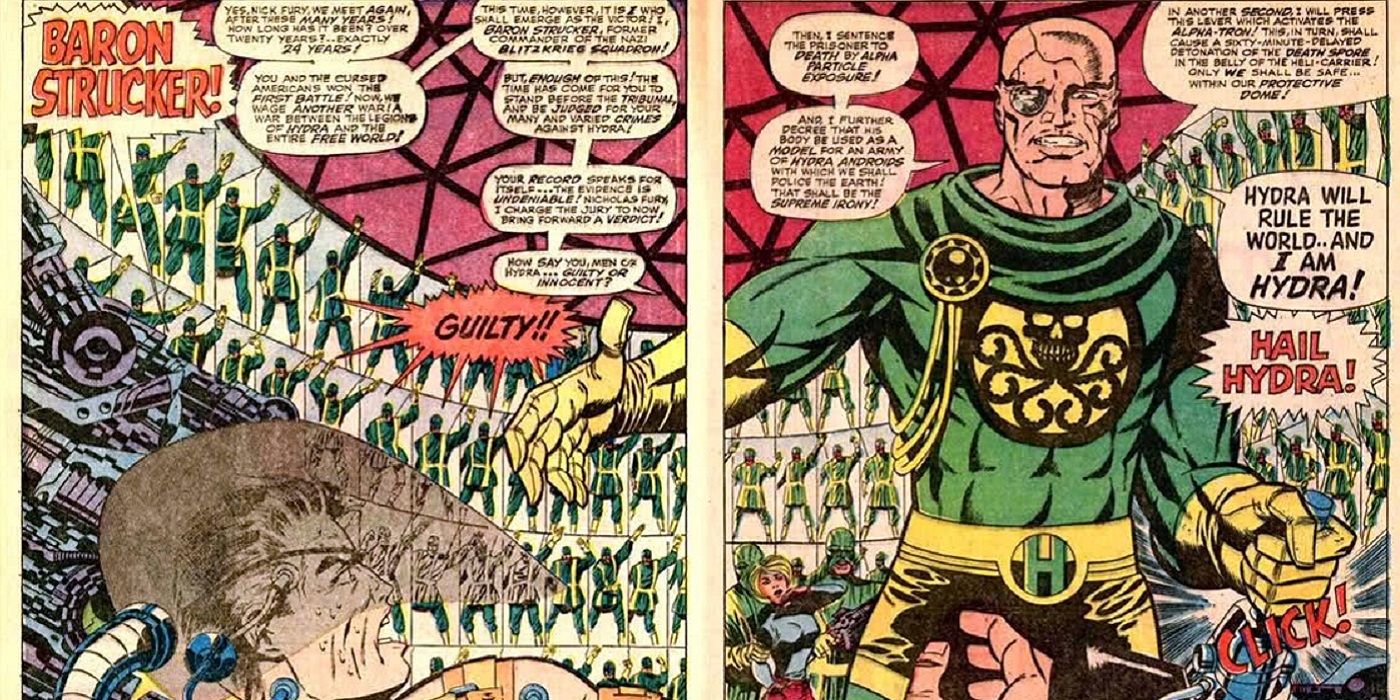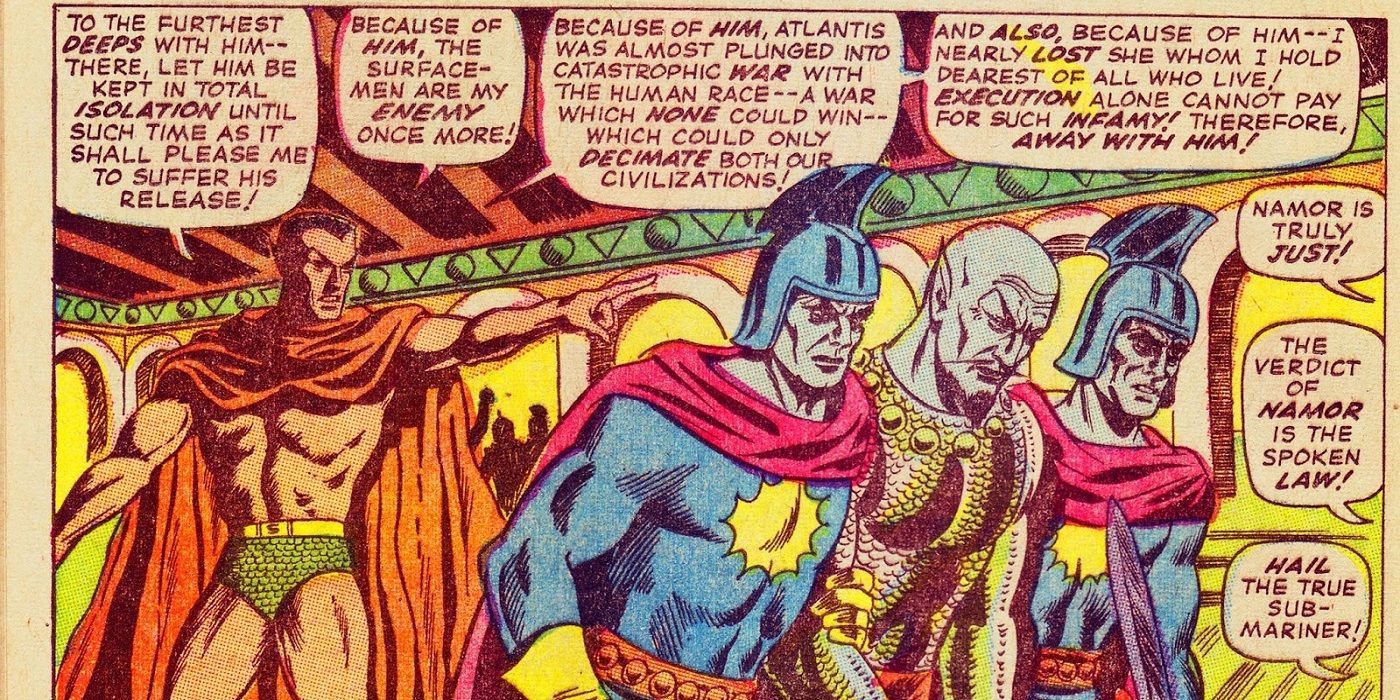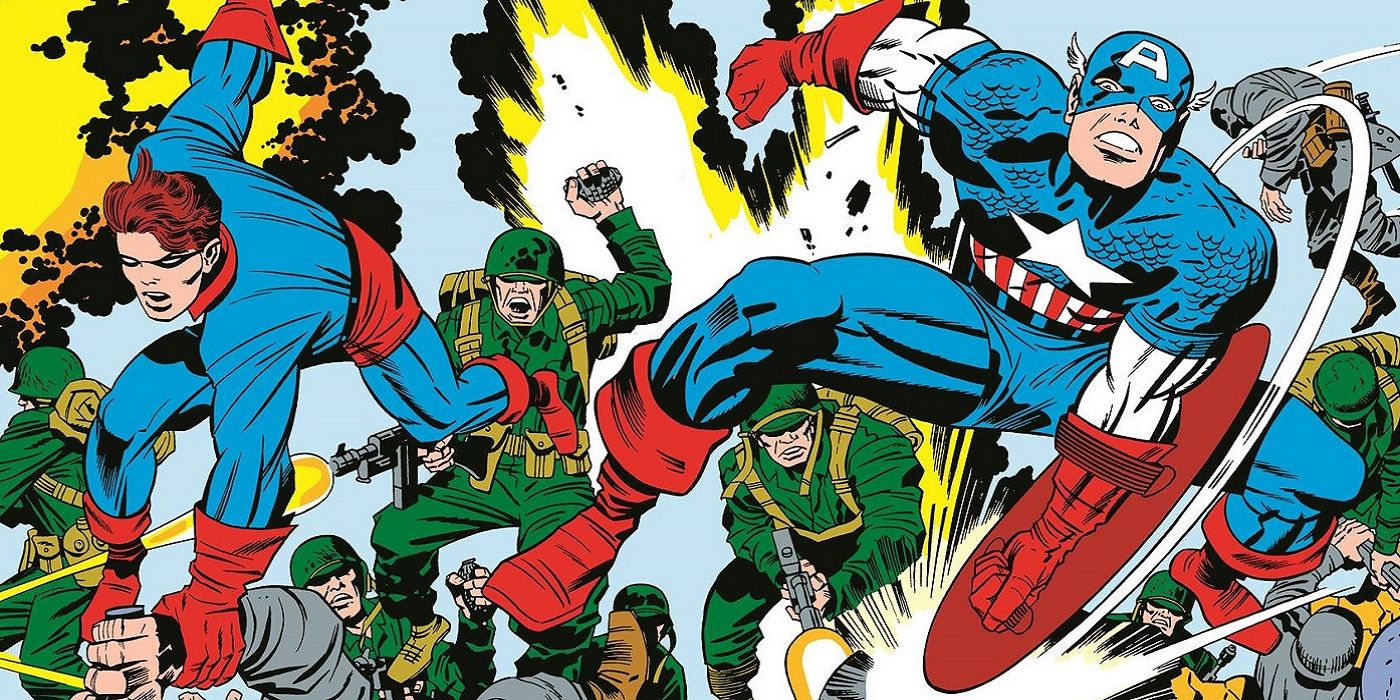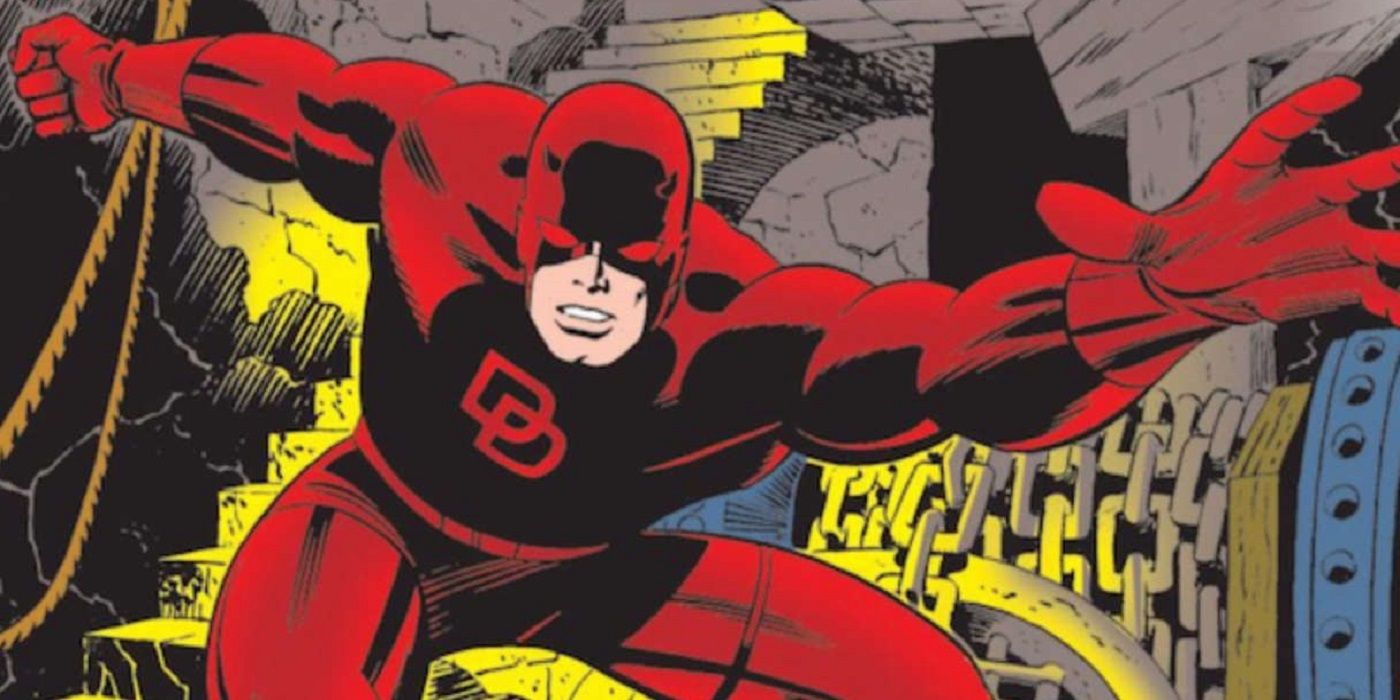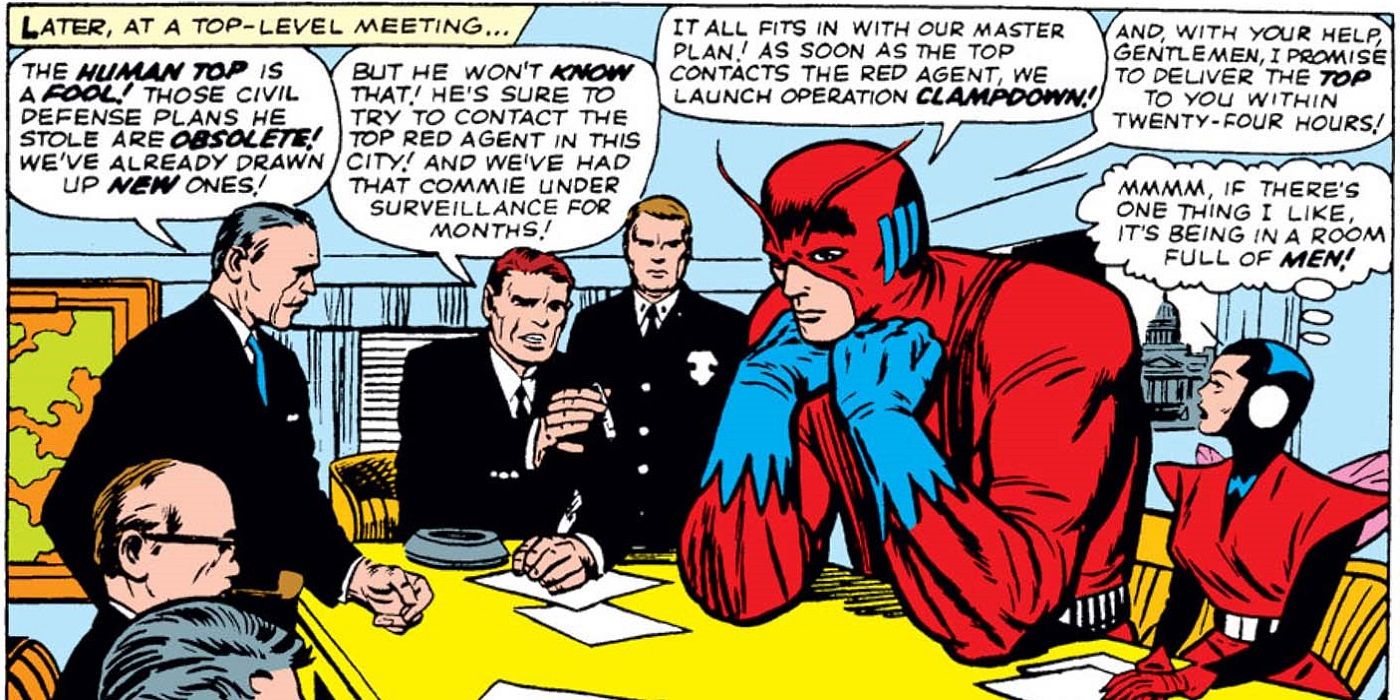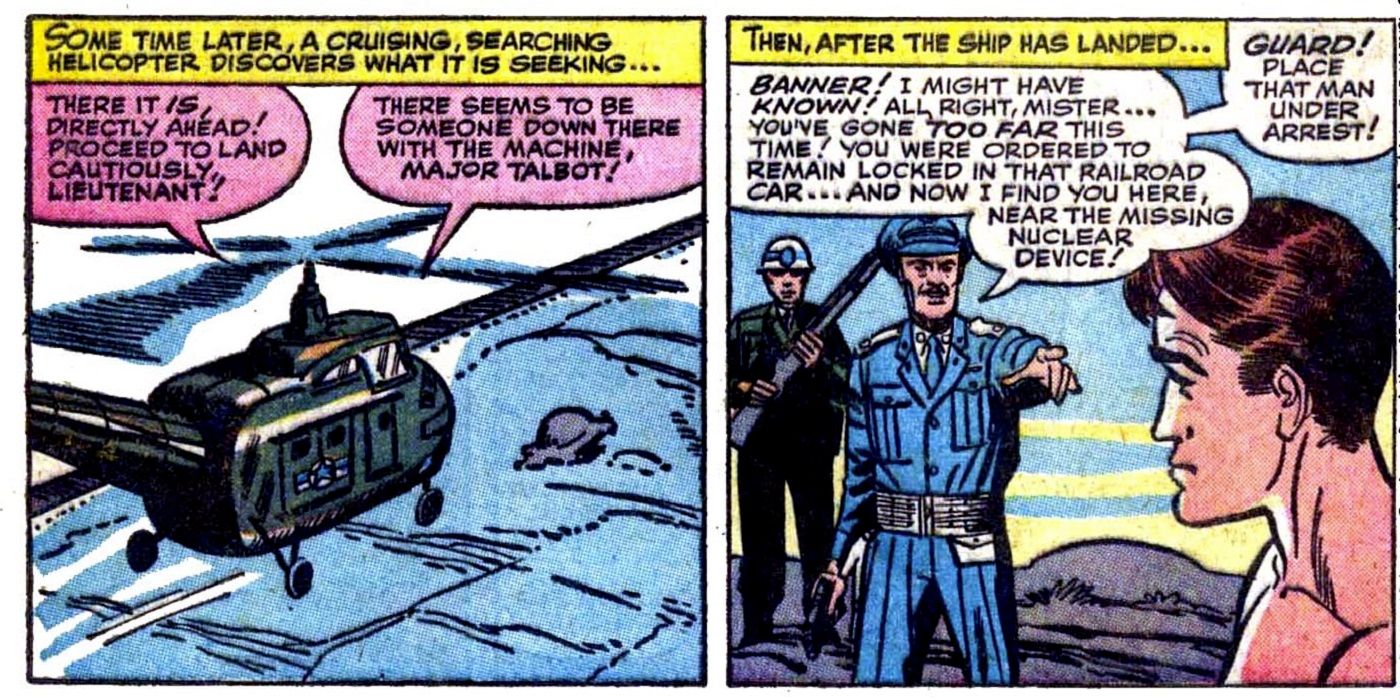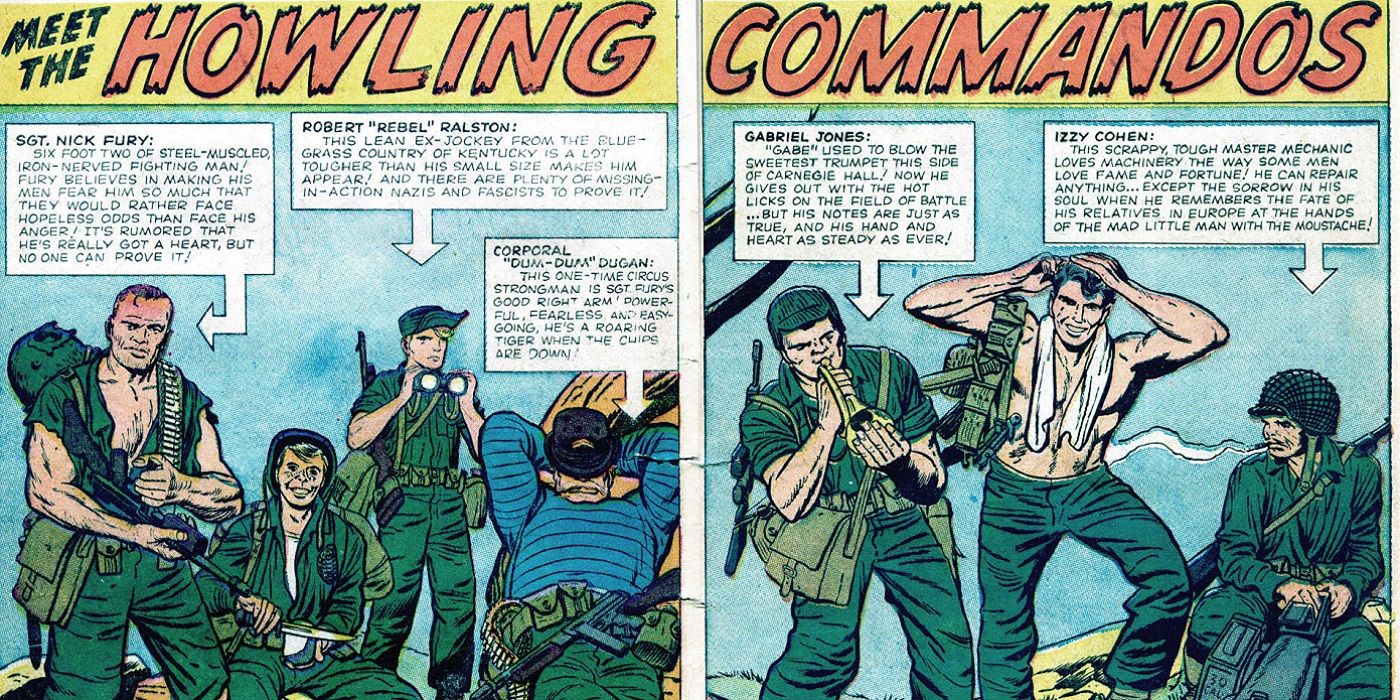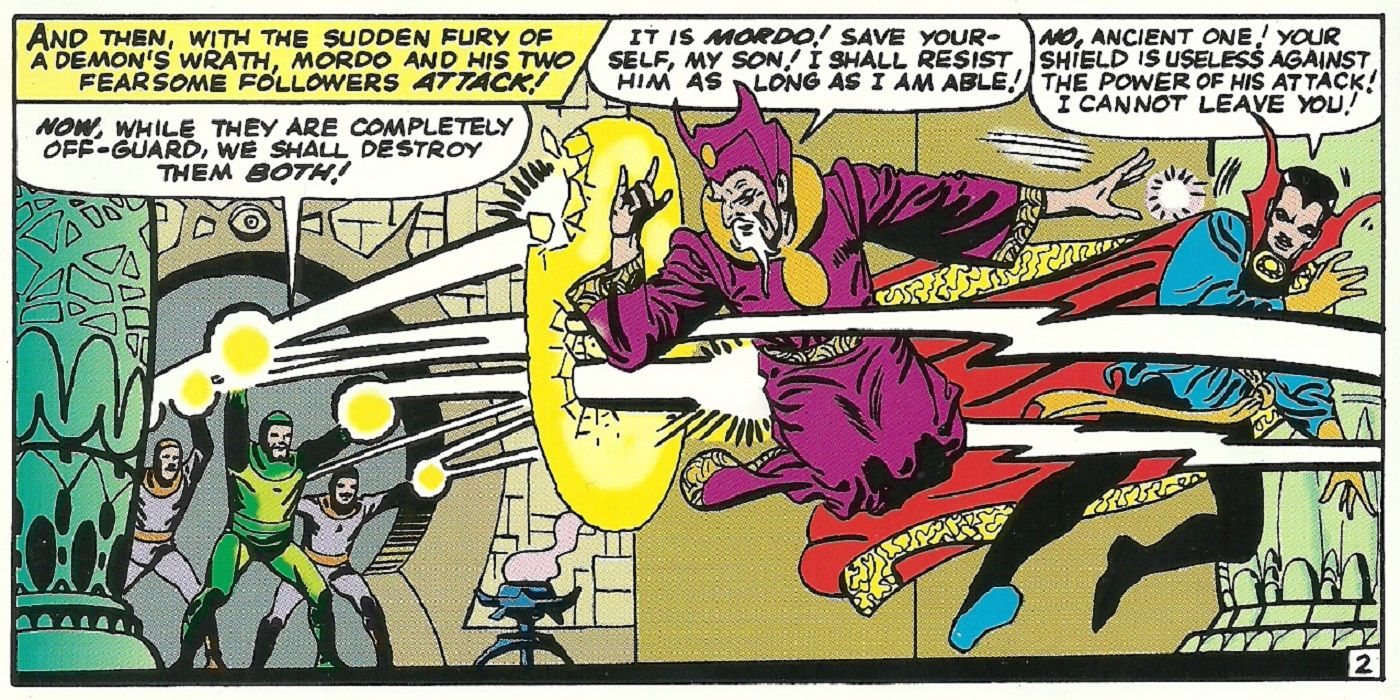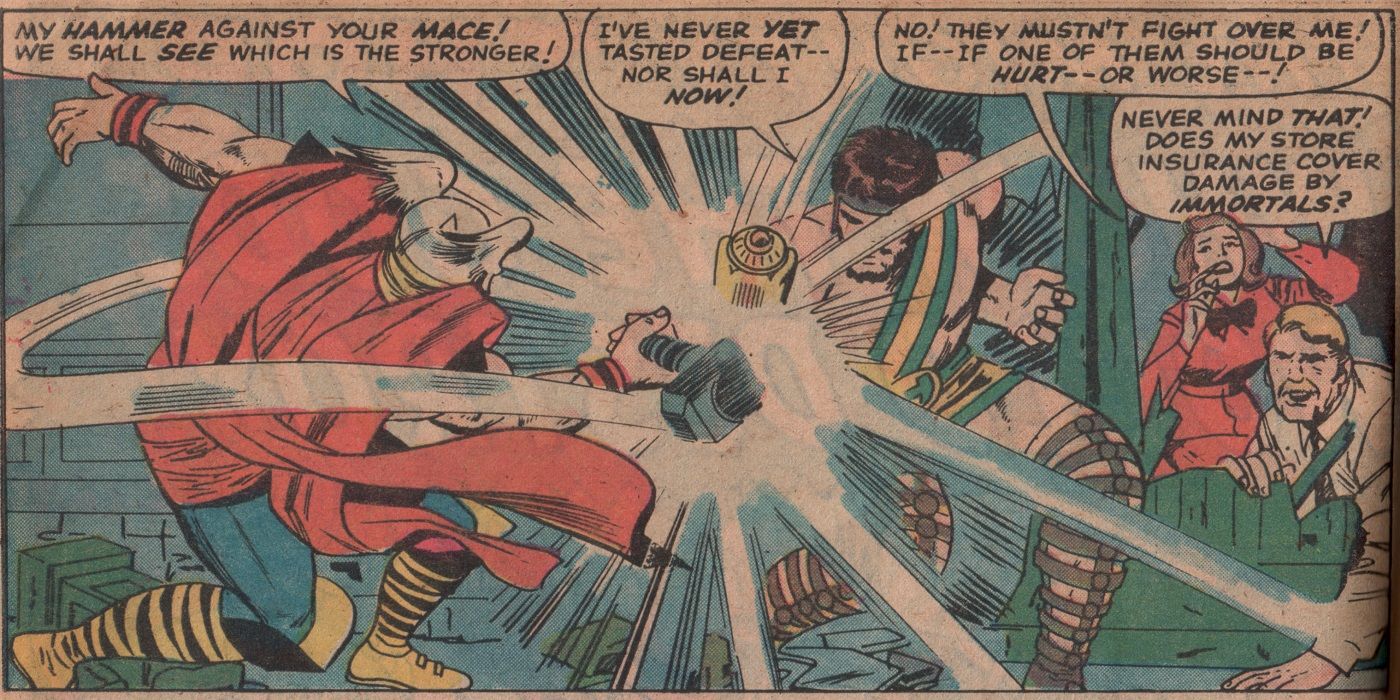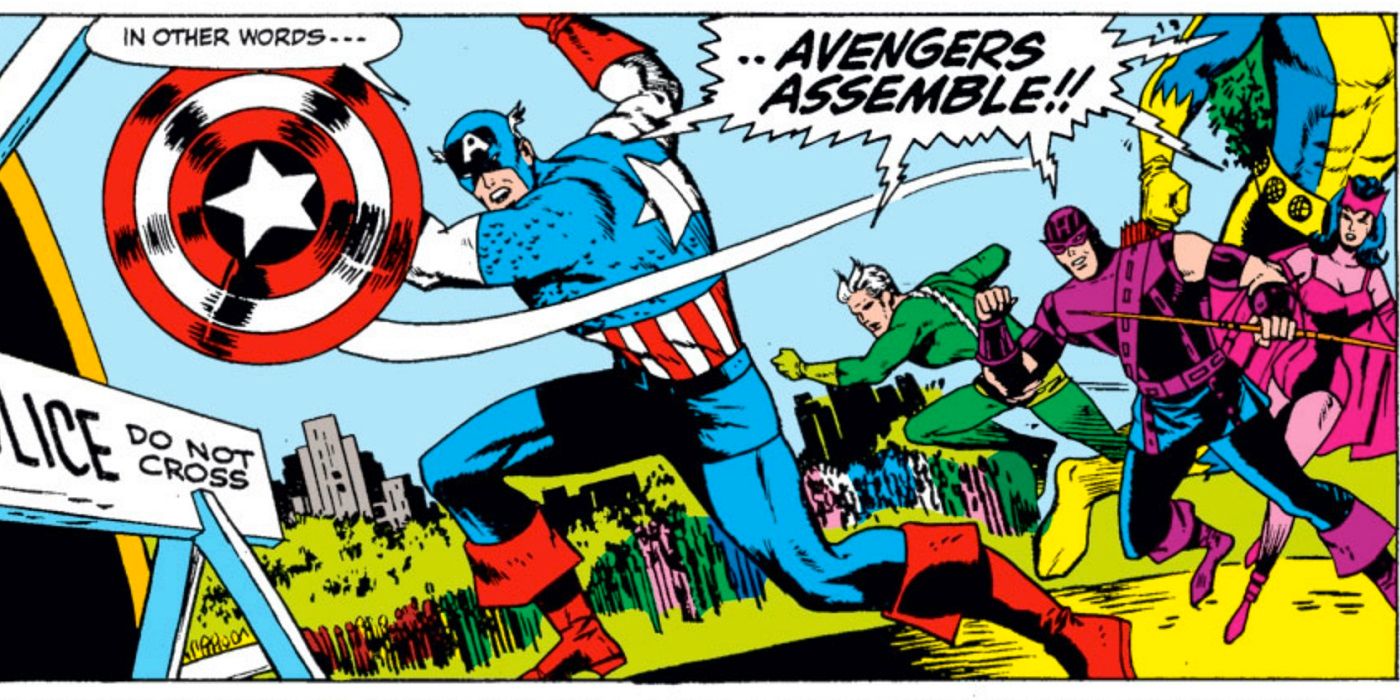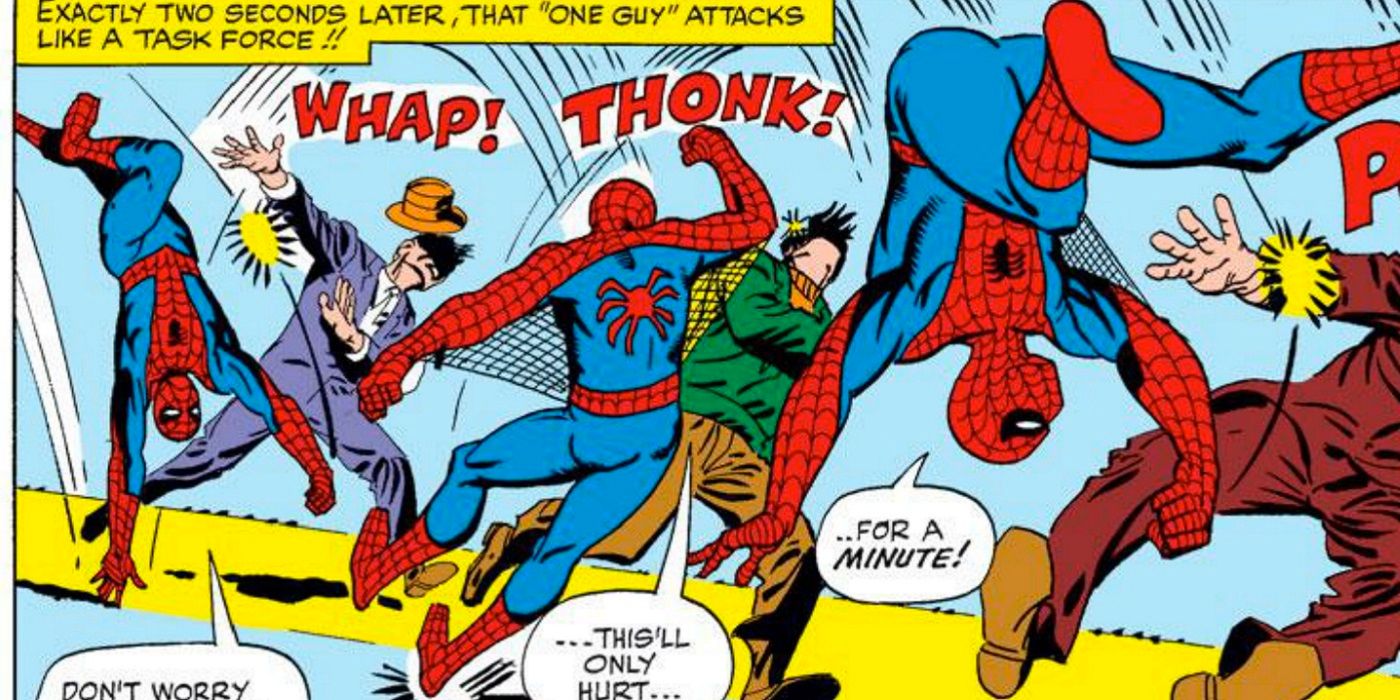It’s no exaggeration to state that, without the stunning success of Marvel in the 1960s (both creatively and commercially), today’s comics industry would be very different. Stan, Jack, Steve and company raised the bar in every respect, with the establishment of the Marvel Universe challenging the perception that comics in the post-comics code era were sanitized entertainment for kids. Strong, often-flawed characters, multi-part stories and an emphasis on continuity captivated readers and saw Marvel’s publications increasingly appeal to college students as well as children.
RELATED: The 15 Weirdest Crossovers in Comic Book History
But in a decade filled with so many tremendous stories, which title reigned supreme? We’ve looked at every Marvel superhero ongoing produced between “Fantastic Four” #1 (November 1961) and “Fantastic Four” #101 (August 1970 -- Jack Kirby’s final issue) in order to assess which hero had the greatest run over this period. Will the FF be proved fantastic? Will Spider-Man show why he’s amazing? Read on…
Note – During this period, several characters appeared in double-feature books, often as a precursor to appearing in their own series. For this reason, list entries have been categorized by character rather than title, to ensure that all incarnations of a character’s appearances can be considered together.
17 Captain Marvel
“Captain Marvel” had a rather unique premise for its time. Rather than featuring yet another human to be bestowed with tremendous power, it focused on an alien protagonist. This wasn't just any alien, but a member of the Kree, the warlike race that had already been shown to have designs on conquering Earth.
The story of Mar-vell rebelling against his superiors and fighting in defense of his adopted planet is an interesting setup, but the execution of the concept is distinctly pedestrian. This reflects the character’s origins, not in a burst of creativit,y but as Marvel’s attempt to trademark the name of Captain Marvel, taking advantage of Fawcett’s publication hiatus for their character.
Although the addition of Rick Jones in #17 gave the title some fresh impetus, Mar-vell himself remained a bland character. Readers seemed to be similarly underwhelmed, with issues #17-21 being published on an erratic schedule, and with #21 being the last issue for over two years. It was only when the title returned from hiatus with a young creator named Jim Starlin attached, that the building blocks for the Marvel cosmic universe began to take shape.
16 Silver Surfer
Stan Lee has often described the Silver Surfer as one of his favorite creations, and his influence on this series can be clearly felt. A stranger in a strange land, the Surfer’s dialogue often appears to be rehashed versions of “Stan’s Soapbox” columns as he condemns the savagery of man and the futility of unthinking hatred.
This isn’t a problem in itself -- there’s nothing intrinsically wrong with having a title character that wants to use violence as a last resort. The main problem with the series is that it’s tremendously repetitive. Typically, the Surfer flies about the Earth bemoaning his lot and stumbles across another hero, causing an epic fight to break out before order is restored. These issues are entertaining in isolation, and with art by John Buscema they’re never less than beautiful to look at; however, taken as a whole, the repetition of these themes dilutes their effectiveness.
Stan recognized the need to shake things up, and in #18, had the Surfer declare that he was abandoning his peaceful ways, promising to be the “deadliest one of all.” His title was cancelled with this issue, coinciding with Kirby’s departure from Marvel and leaving readers to speculate on what might have been.
15 X-Men
When comparing the Silver-age X-Men to the record-setting sales juggernaut that the team would become in the '80s and '90s, it’s remarkable how things changed over this time. Never one of Marvel’s hot titles, "X-Men" was cancelled in March 1970, surviving only in reprints until the debut of the all-new, all-different team in 1975. Lee and Kirby had both departed by issue #19, and many of the following issues featured worthy but dull stories that suffered in comparison to the rest of Marvel’s output. While the run from Roy Thomas and Neal Adams helped inject some life into the flagging book, it was too little, too late.
It’s difficult to place exactly why this run feels like a missed opportunity. The original five X-Men are all likable characters, even if certain plot points -- such as the attraction between Cyclops and Jean -- are rather overused. The villains are interesting for the most part, although the series, particularly in the early years, does feature a tendency to return to Magneto and the Brotherhood of Evil Mutants far too frequently. In the end, the series, ironically enough, just never seemed to have that X factor.
14 The Invincible Iron Man
The modern-day Iron Man may be a box-office smashing, merchandiser’s dream, but the character as originally created was much different. Tony Stark was a wealthy, older weapons designer, not the kind of character with which readers would easily identify. Since the Spider-Man styled teen angst was off the table, the stories succeeded by tying Tony’s adventures heavily into the political fabric of the time; namely, the struggle against communism.
Fighting against a parade of foes from beyond the Iron Curtain, whether they be saboteurs, armored foes or criminal masterminds, the book quickly settled into a comfortable groove. Tony’s armor may have evolved over this period, but the same plot points were hit over and over again. These were perfectly entertaining, of course, but the ongoing love triangle between Pepper, Happy and Tony, and Tony’s frustrations with his damaged heart, are frequently repeated.
The book is notable for being one of the few Marvel titles during this period not to have been drawn by Kirby or Ditko. Don Heck and George Tuska may not be as renowned as the aforementioned artists, but in his design of Tony, Pepper and Happy, Heck created three distinctive visuals that are immediately recognizable.
13 Human Torch
It’s easy to see why Johnny Storm was chosen to be the member of the FF spotlighted in solo adventures. Reed and Sue were an older, engaged couple, while The Thing was permanently irritable and slightly scary. In contrast, Johnny was a happy-go-lucky teenager who was sure to appeal to Marvel’s readers. In reality, each of these characters would have faced the same problem as Johnny: when the team book is the “main book,” all the developments in the solo series must be inconsequential, with major changes reserved for the main FF title. As a result, while Johnny’s stories are entertaining and feature some wonderfully obscure villains, they can’t help but feel rather slight.
Written by Stan Lee and with a rotating cast of artists that included Jack Kirby, Dick Ayers and Bob Powell, the book does feature some moments of historical Marvel significance. The Thing and Torch met the Beatles, and “Captain America” made a brief appearance, as a test for whether readers wanted to see him return to the Marvel universe. But the greatest legacy of all was that the title introduced readers to the legendary villainy of Paste Pot Pete. ‘Nuff said.
12 Nick Fury Agent of S.H.I.E.L.D.
Nick Fury has the surprising distinction of being the first Silver Age Marvel hero to feature in two ongoing titles bearing his name -- this title ran concurrently with the chronicles of his WW2 adventures in “Sgt. Fury and the Howling Commandos.” The decision to bring Sgt. Fury into the modern era, thereby tying him into the growing public fascination with spies and secret agents, was a smart one. The creators took obvious delight in dreaming up the most outlandish gadgets and scenarios, with the ever-present vibe that anything could happen. The S.H.I.E.L.D. Helicarrier and life model decoys are two of the many inventions that become Marvel staples, while Hydra was also first introduced during this run.
The title was taken to the next level by the art of Jim Steranko, his work appearing almost revolutionary when compared with many other artists of the era. In composition, panel design and just sheer creativity, Sternako’s tenure on the title (encompassing Nick’s appearances in “Strange Tales” and the initial issues of his ongoing) was always innovative and consistently entertaining.
11 Namor, The Sub-Mariner
Making his reappearance in “Fantastic Four” #4, Namor -- if rarely an outright villain -- was frequently used as a surly antagonist over the next few years, with only his affections for Sue Storm keeping him in check. His frustration with land dwellers, where he was very much a fish out of water (sorry…), led to great moments, such as “Daredevil” #7, wherein he attempted to sue the entire human race.
When Namor’s solo adventures began to appear in “Tales to Astonish,” it was the first time that modern readers were given an insight into his undersea society, or how he functioned as a hero and ruler, rather than an antagonist. Taking full advantage of the vast expanse of ocean that Namor called home, Stan Lee -- followed by Roy Thomas when Namor gained his own title -- filled the series with grand quests, strange threats and political intrigue, primarily brought to life by Gene Colan, but also featuring work from Bill Everett, Namor’s creator.
Headstrong and arrogant, and tremendously enjoyable as a result, Namor’s adventures offered something different from the rest of Marvel’s line. After all, where else could readers watch sea monsters be beaten-up with such regularity? Imperius Rex!
10 Captain America
After his reappearance in “Avengers” #4, and his subsequent membership of the team received a favorable response, Cap was given his own feature in “Tales of Suspense,” sharing space with Iron Man. These stories focused on Cap attempting to build a life for himself in this new era, attempting to escape the shadows of his past. This feeling of being “a man out of time” has been rather glossed over in recent retellings, including “The Ultimates” and Cap’s appearances on the big screen. Here, it drives a considerable number of stories: Cap constantly bemoaning the loss of Bucky and his old life.
It’s true that at times, this comes across as rather heavy-handed, with Cap’s self-pity becoming quite wearisome month after month. Thankfully, where this run excels is in moments of high-action, with Cap fighting the hordes of Hydra, the villainy of the Red Skull and a bevy of superpowered foes. The three issue run by Jim Sternako (#110, #111 and #113) is rightfully celebrated, but Jack Kirby also does some fantastic work over this period, returning to chronicle the exploits of perhaps his most famous creation.
9 Daredevil
The Daredevil of the Silver age -- with his quips, secret identity struggles and colorful rogues gallery -- is far removed from the darker turn that Matt Murdock’s stories took in the 1980s. Here, each boot to the face is accompanied by witty banter as he faces a collection of strange foes, including Stilt Man, Frog Man and The Owl. In Foggy Nelson and Karen Page, the book also has two strong supporting characters, who help drive much of the action in Matt’s personal life.
The lengthy collaboration between Stan Lee and Gene Colan during this period was a high-water mark for both, with a number of memorable moments. Foremost among these was Matt’s impersonation of Mike Murdock -- his heretofore unknown twin brother -- in order to convince Foggy and Karen that he wasn’t Daredevil. It was absolute nonsense, but delivered with such a knowing wink by the creators that it became a joy to read. The “Daredevil” movie and TV show both drew inspiration from the character’s darker, more serious adventures. What this run shows is that his early days as a “scarlet swashbuckler” were equally entertaining. Who needs a bunch of ninjas when you have the long-legged menace that is Stilt Man?
8 Ant-Man/Giant-Man
Compared with the acclaim directed at Marvel’s other Silver age creations, Hank Pym often tends to be overlooked. It’s true that his adventures during this period may not have been as commercially successful as his more famous stablemates, but for sheer enjoyment they more than hold their own.
Hank’s time as Ant-Man is genuinely entertaining, as he rides on insects, battles crooks and generally has the time of his life. However, it’s something of a disappointment that it’s short-lived, being quickly discarded in favor of the Giant-Man persona. The crazy villains continued (the Living Eraser and the Human Top being particularly enjoyable), but having another hero that’s big and strong just wasn’t as interesting for many readers as an ant-sized hero.
We would be remiss not to mention that this series also saw the introduction of Janet Van Dyne: The Wasp. In later years, Jan would go on to become leader of the Avengers and a strong, independent character. In these early appearances, though? Let’s just say that Stan Lee’s numerous accolades probably didn’t include any from the women’s liberation movement.
7 The Incredible Hulk
Ol’ green skin may be one of Marvel’s most recognizable heroes, but that doesn’t mean he was an instant success. His initial series was cut short after only six issues, despite having the combined talent of Stan Lee, Jack Kirby and Steve Ditko working on it. It was over a year before he returned in his own series, co-headlining “Tales to Astonish” with Giant-Man.
In the space of these six issues, Hulk went through a bewildering array of changes: in color (gray to green), intelligence (mindless brute to Banner’s intelligence) and in his ability to transform. When he made his return, it was as a more stable character. Changing into the Hulk during times of stress, pursued by the army and attempting to salvage a normal life with Betty Ross, the groundwork for the green Hulk’s adventures was laid here. There’s a reason that so many people associate the Hulk with the savage, green version, and there’s no denying that it’s always entertaining watching him smash “puny humans” and anyone else who gets in his way.
6 Sgt. Fury and the Howling Commandos
Given that Nick Fury is so associated with S.H.I.E.L.D., it’s surprising to realize that his WW2 adventures continued to be published for a further five years after his spy capers were cancelled. There’s a simple reason for that: “Sgt. Fury and the Howling Commandos” is a rip-roaring, Nazi-smashing thrill ride! ‘Nuff said.
The story goes that by 1963, Stan Lee was so confident of Marvel’s success that he bet his publisher that he could publish a comic with a terrible name, in an unpopular genre (war) and it would still be a hit. Apocryphal or not, the comic was a deserved success. In all his cigar-chomping glory, Nick Fury is a great lead character, ably supported by the rest of the Howling Commandos. These characters could have been clichés, or in modern war comics would probably have been cannon fodder. This definitely wasn’t the case here: each Howling Commando was a key part of the group, their importance shown by the fact that some of them (including Dum Dum Dugan and Gabe Jones) followed Nick into the spy game.
5 Dr. Strange
It’s funny to hear viewers of the new “Dr. Strange” film describe the special effects within, and how reality warped in front of them. If viewers thought that was impressive, they would be blown away by a Steve Ditko “Dr. Strange” comic. Stan Lee may have delighted in coming up with mystic phrases and colorfully-named magical items, but it’s Ditko’s visuals that make their run on this book such a tremendous read.
From humble beginnings, where there is little to distinguish Strange from numerous other magical characters before him, the series grew in confidence and stature during their run, with Strange facing increasingly dangerous foes. The culmination of Ditko’s run, with Dormammu battling Eternity as an awestruck Strange looks on, is a fitting end, and could almost serve as a series finale.
Considered in isolation, Ditko’s run on “Dr. Strange” is a contender for the greatest Silver Age Marvel run. However, the issues that followed can’t help but feel rather pedestrian by comparison -- the serviceable art by Dan Adkins having little of Ditko’s spark. Readers must have agreed, because by November 1969, "Dr. Strange" had been cancelled.
4 The Mighty Thor
Lee and Kirby’s collaboration on “Fantastic Four” may gain most of the plaudits, but their time together chronicling Thor’s adventures deserves equal respect. Starting off as “villain of the week” done-in-one stories, the scale of Thor’s adventures expanded as Asgard and its colorful inhabitants were fully developed. The pseudo-Shakespearean language used by Thor and his fellow Asgardians was the perfect fit for Stan’s highfalutin dialogue, while Jack seized the chance to go wild, lovingly detailing the architecture of Asgard and the strange collection of beings that populated the realm.
Elements of Norse mythology were successfully mined for inspiration, leading to epic tales such as the Asgardians’ struggle to avert Ragnarok. Further context was given through the “Tales of Asgard” back-up strips that appeared in many issues, but elements from a range of mythologies were utilized, with the introduction of the Greek Gods leading to the first of Thor’s many battles with Hercules. Big, brash and brilliant, Silver Age Thor is a real gem.
3 The Avengers
From the start, what characterized the Avengers was change. The Hulk quit and Captain America joined, but the biggest change was yet to come. In issue #16, Iron Man, Thor, Giant Man and Wasp all left, leaving Captain America as the sole member. By the end of the issue, he had been joined by two X-Men adversaries (Quicksilver and Scarlet Witch) and an Iron Man foe (Hawkeye). This must have been a huge shock for fans at the time. Looking back, it's astonishing that Marvel took such a gamble.
Yet, when the Silver Age run of "The Avengers" is examined, the wisdom of this decision becomes clear. By primarily focusing on members without their own solo titles, writers -- first Stan Lee, then Roy Thomas -- could ensure that these characters could grow and develop within the confines of the team. This trend continued with the addition of the Vision and the Black Panther, while Giant-Man and the Wasp returned once their solo adventures ceased.
Filled with great moments, this run is remarkably consistent; and with art from some of Marvel's best, including Jack Kirby, Don Heck and John Buscema, it never looked less than amazing.
2 The Fantastic Four
Exactly how good was “The Fantastic Four” during the Silver Age? Well, the slogan “The world’s greatest comic magazine!” adorned the book’s masthead and, unlike much of Marvel’s publicity during this decade, it was more than mere hyperbole. The importance of the FF simply can’t be overstated, kicking off the Marvel age and revolutionizing comics.
The characters initially had no secret identities; they argued and often behaved in ways that were less than heroic; they were allowed to grow and age -- in so many ways this title challenged the accepted roles of superhero comics, and established the Marvel template as a result.
The Lee/Kirby run -- 101 issues in total -- is rightfully regarded as one of the pinnacles of superhero comics, and within this there are so many great moments. Introducing readers to Doctor Doom, the Skrulls, the Silver Surfer, Galactus, the Inhumans, Black Panther and so many more, the series maintained a remarkably high level of quality over this time. Arguments will always rage about how much credit Lee and Kirby deserve for their respective contributions to this title. What can’t be disputed is that, together, they made magic.
1 Spider-Man
It was a tough choice, but in the end, the wall-crawler just edges out the Fantastic Four for the top-spot. Perhaps Marvel's greatest success story during the 1960s, and putting to rest the belief that teenagers could only be sidekicks, not heroes, Spidey's adventures during this period are filled with countless great moments. It's a testament to the strength of these early issues that Spidey's rogues gallery and supporting cast are still largely populated by characters created during the Silver Age. Then, of course, there's the elegant simplicity of his origin and famous catchphrase, both instantly recognizable to comic fans and the general public alike.
The Lee/Ditko run is an example of comics at their best. Both combined beautifully to give the series a distinct feel, and while their collaboration eventually ended acrimoniously, what they created together stands the tests of time. The arrival of John Romita as artist saw the title develop more of a soap-opera feel, taking advantage of Romita's past experience drawing romance comics. If Ditko's Peter Parker was a brooding loner, prone to displays of temper, Romita's was more like a typical romantic lead, torn between the twin attractions of Gwen and Mary Jane. What remained constant, though, was the quality of the stories. Throughout the Silver Age, Spider-Man truly was amazing.
You've read our picks for the best Silver Age runs, now we want to know what you think! Let us know in the comments section here or on Facebook!

